Popular Content
Want Email Updates?
Get emails about new stuff.
Be the first to know.
Looking for Something?
Figurative Language Worksheets
Common Core State Standards demand that students identify figurative language techniques. This means that your standardized test is likely to question figurative language knowledge. Students can prepare for this through repeated exposure to figurative language. You can do this by studying figurative language poems, activities, or the worksheets on this page.
These worksheets will give students rapid fire practice with figurative language techniques. Not only must students identify the techniques, they must explain their answers. This approach forces students to consider their answers. It also helps teachers identify misunderstandings.
Figurative Language Worksheet 1
Here is a ten-problem figurative language worksheet. It will give students rapid-fire practice with identifying figurative language techniques. Students read the examples, identify the technique, and then explain their answer.
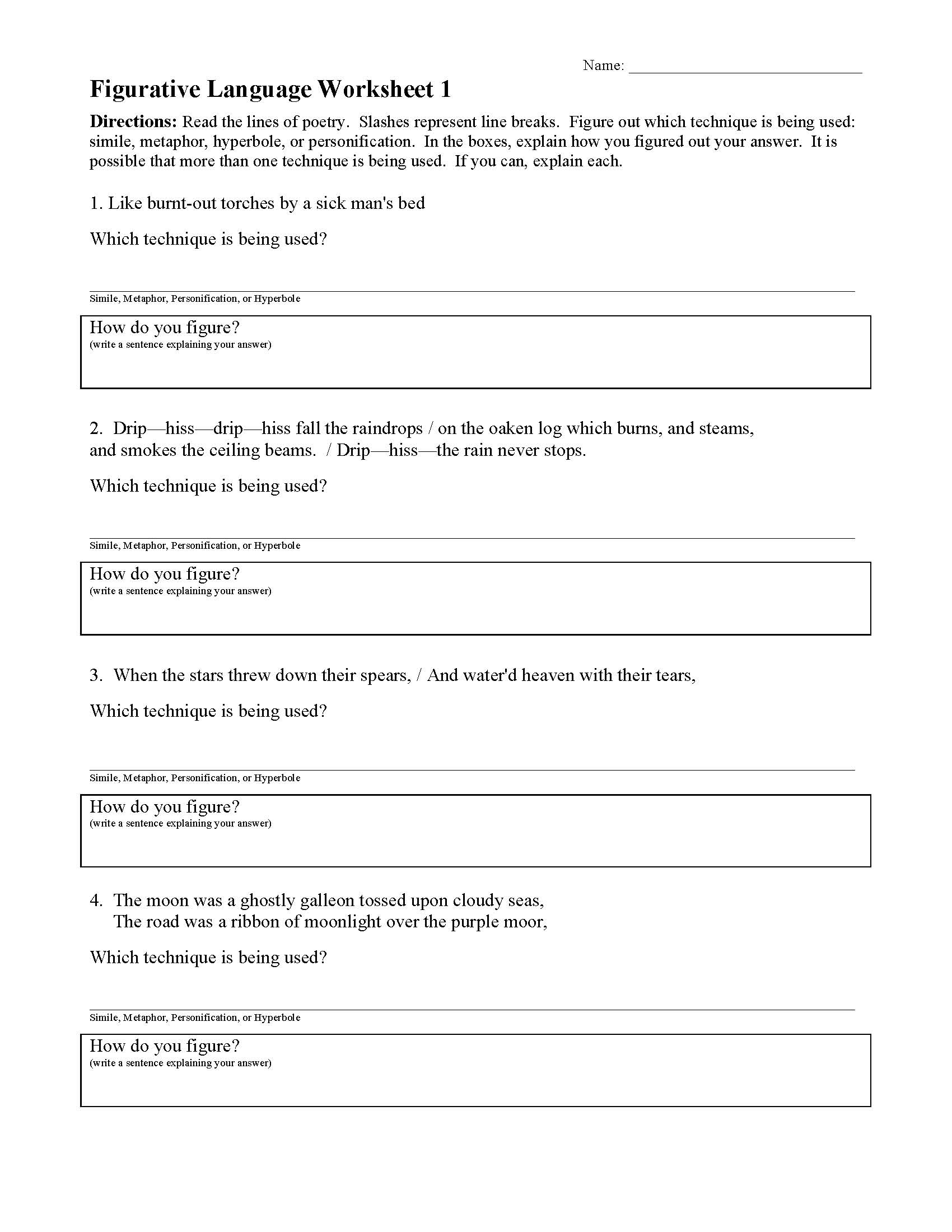
Figurative Language Worksheet 2
Here is another ten-problem worksheet to give students practice identifying figurative language techniques. Students will read the poetic snippets, identify the figurative techniques, and explain their answers.
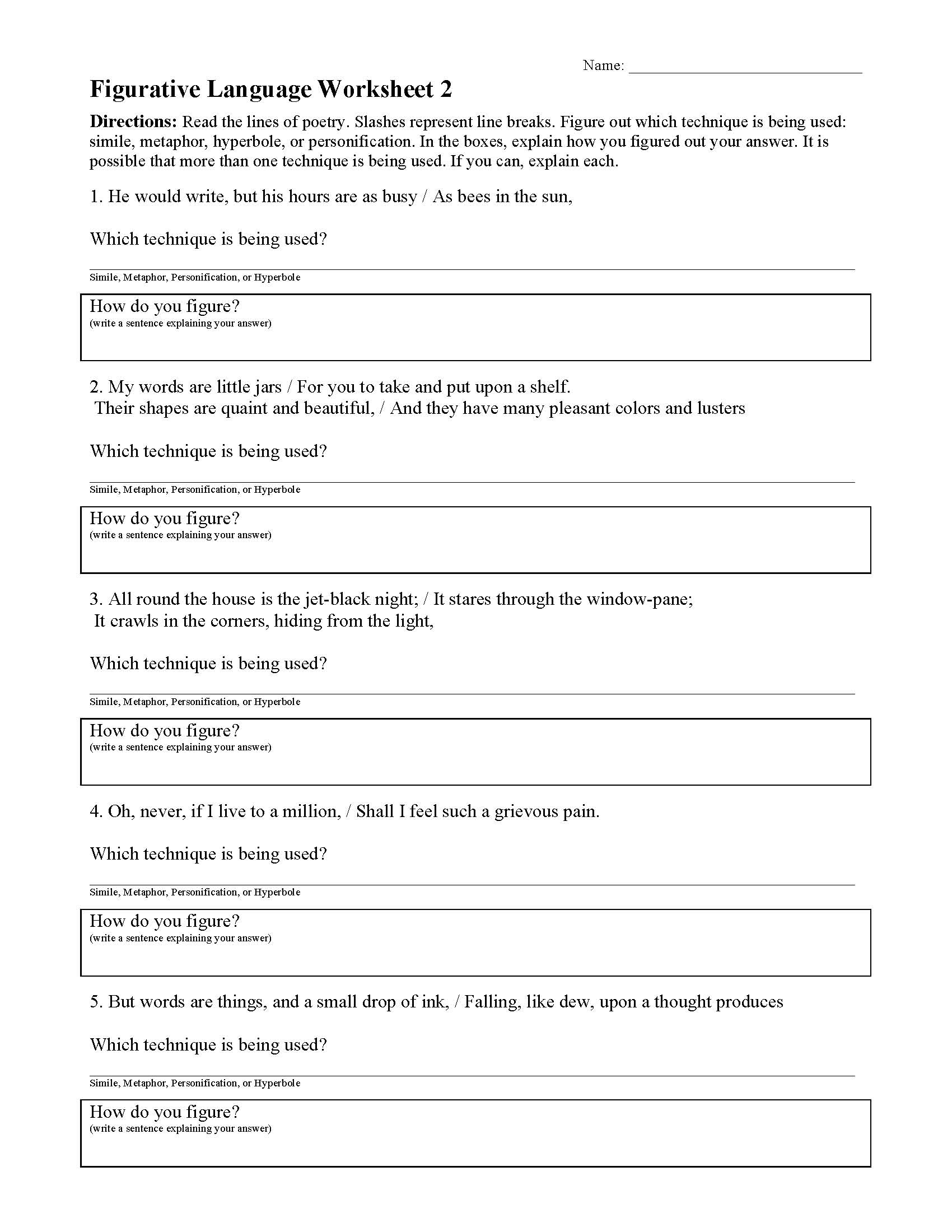
Figurative Language Worksheet 3
This worksheet packs a double dose of figurative language practice: four sides and 27 problems! Students determine whether each snippet contains an example of simile, metaphor, personification, hyperbole, or idiom. Students are also required to explain their responses.
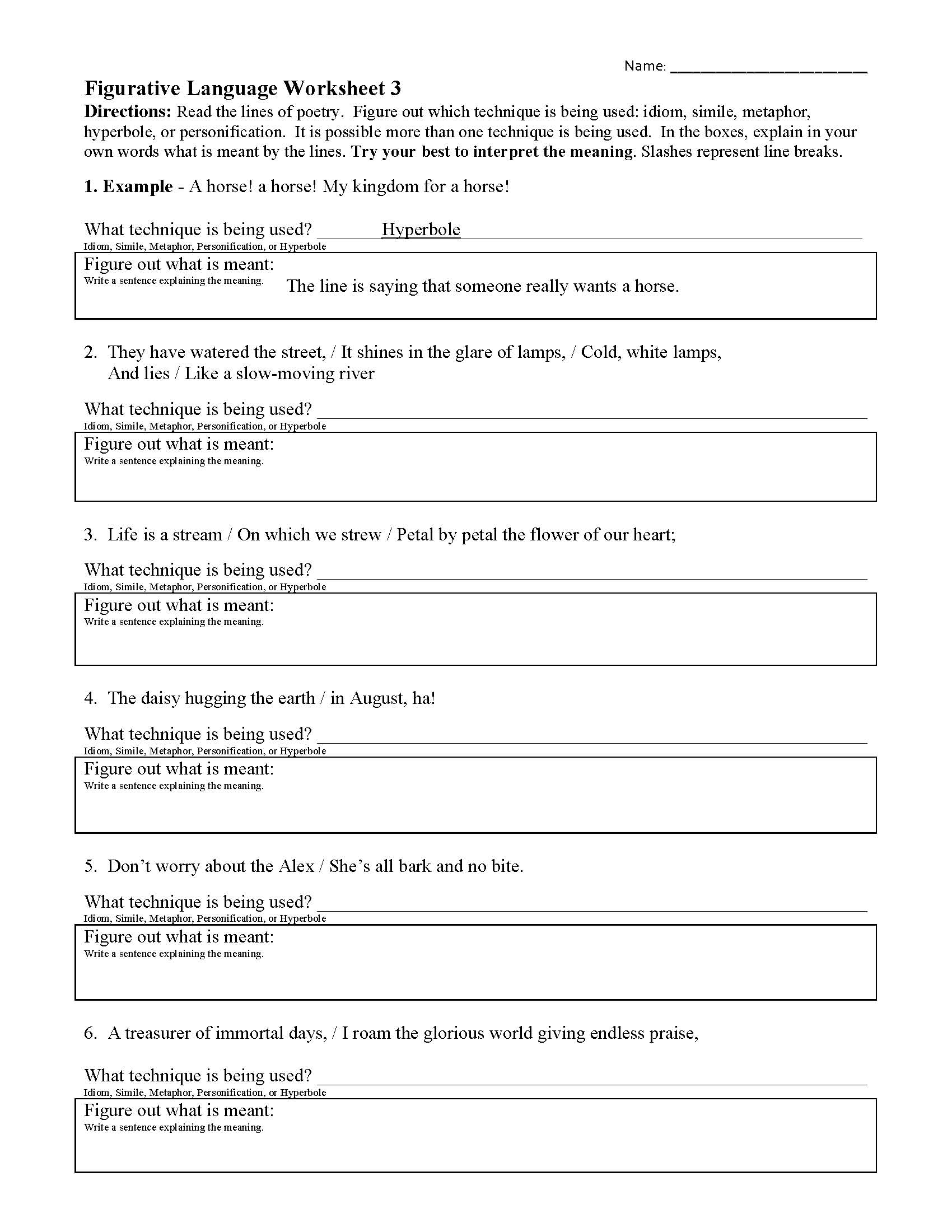
Figurative Language Worksheet 4
This worksheet has ten more practice problems from classic poems to help students master figurative language. Students will read the examples, identify the figuartive techniques, and then explain how they got their answers.

Figurative Language Worksheet 5
Here is another worksheet with 10 more practice problems to help students master figurative language. Students will read the examples, determine the figurative language technique, and then explain their answers.
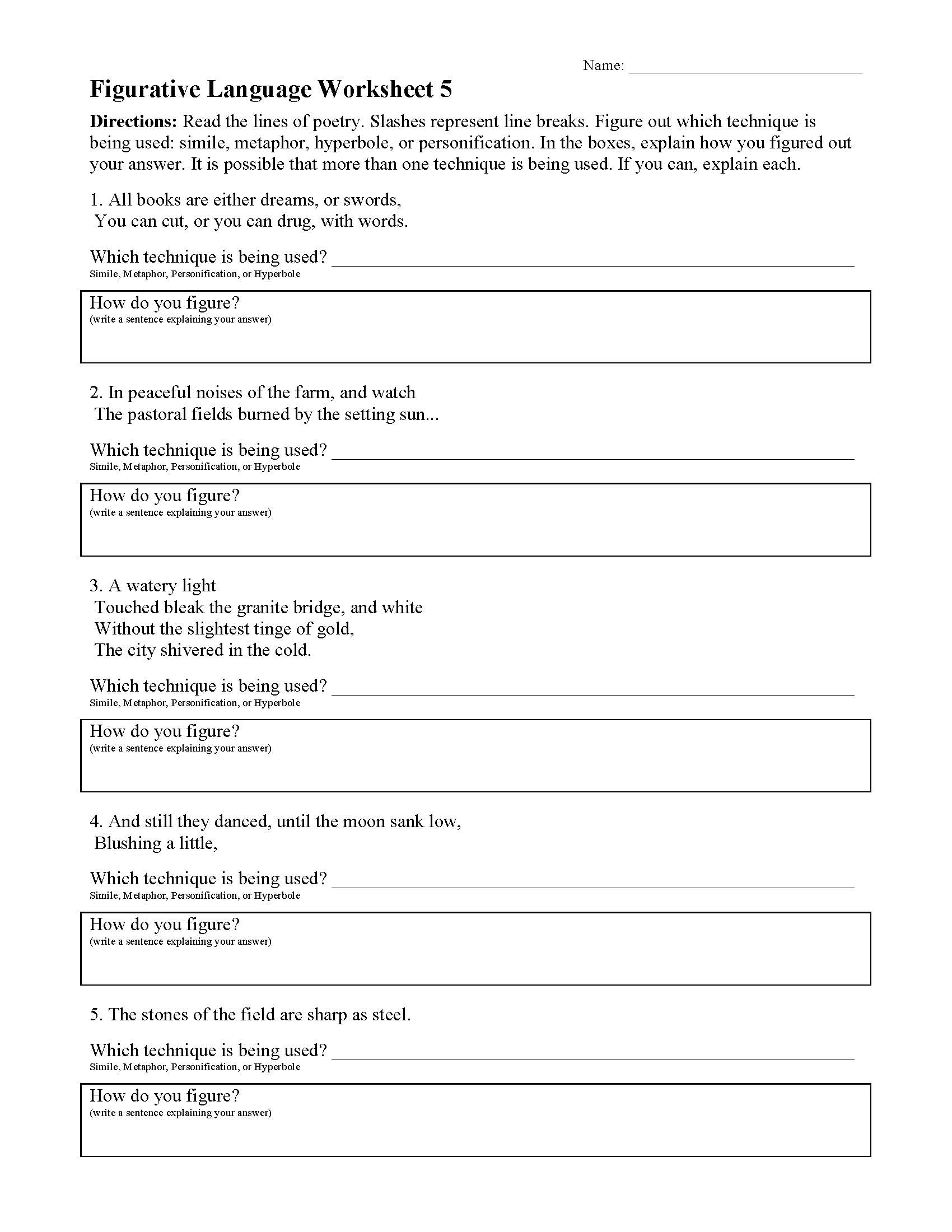
Figurative Language Worksheet 6
Do you need more practice with figurative language? This 23 problem worksheet with four pages should keep students busy for a little while. Students will identify the figurative language technique used in each of the 23 examples and then explain how they got their answers.
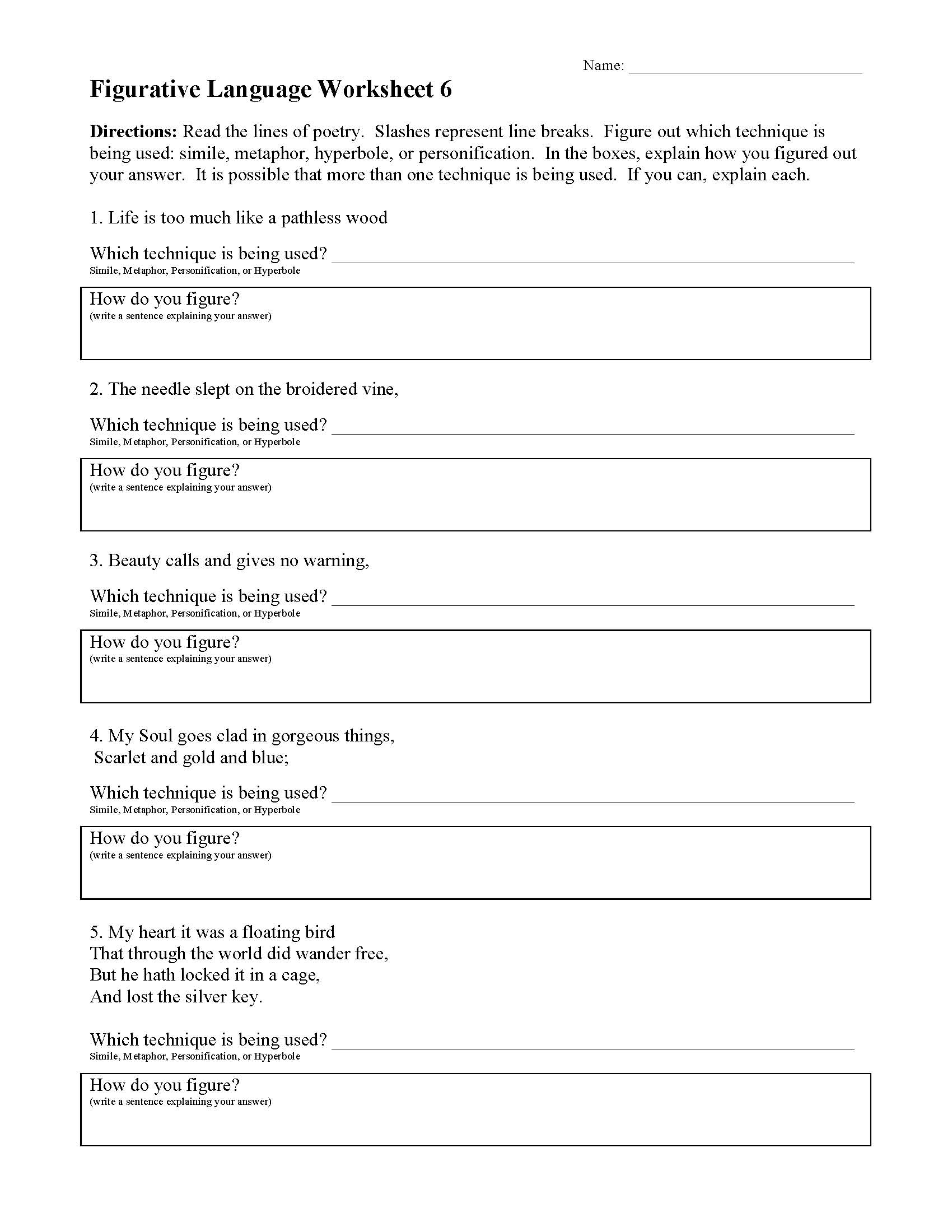
Figurative Language Worksheet 7
What's better than figurative language practice? More figurative language practice! Here is another double-sided figurative language worksheet with ten problems. The language used in this worksheet is easier to understand.
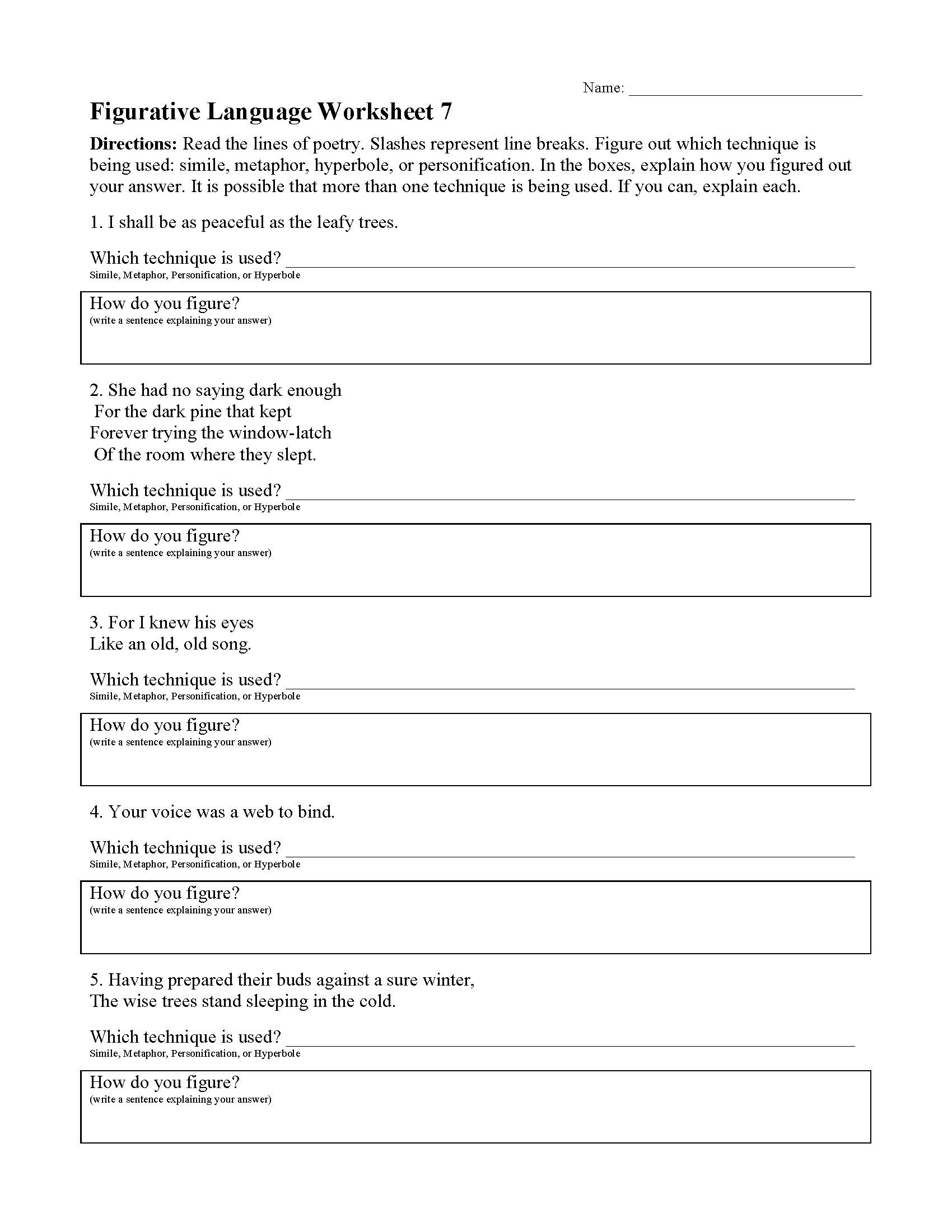
Figurative Language Worksheet 8
Here is yet another four-page figurative language worksheet. It has 22 figurative langauge techniques used in a variety of contexts. Students read each example, identify the technique that is being used, and then explain how they got their answers.

Figurative Language Worksheet 9
Are you still looking for practice with figurative language? This two-page, double-sided worksheet has 22 more figurative language problems. Students read the poetry snippets, identify the figurative language techniques, and then explain their answers.
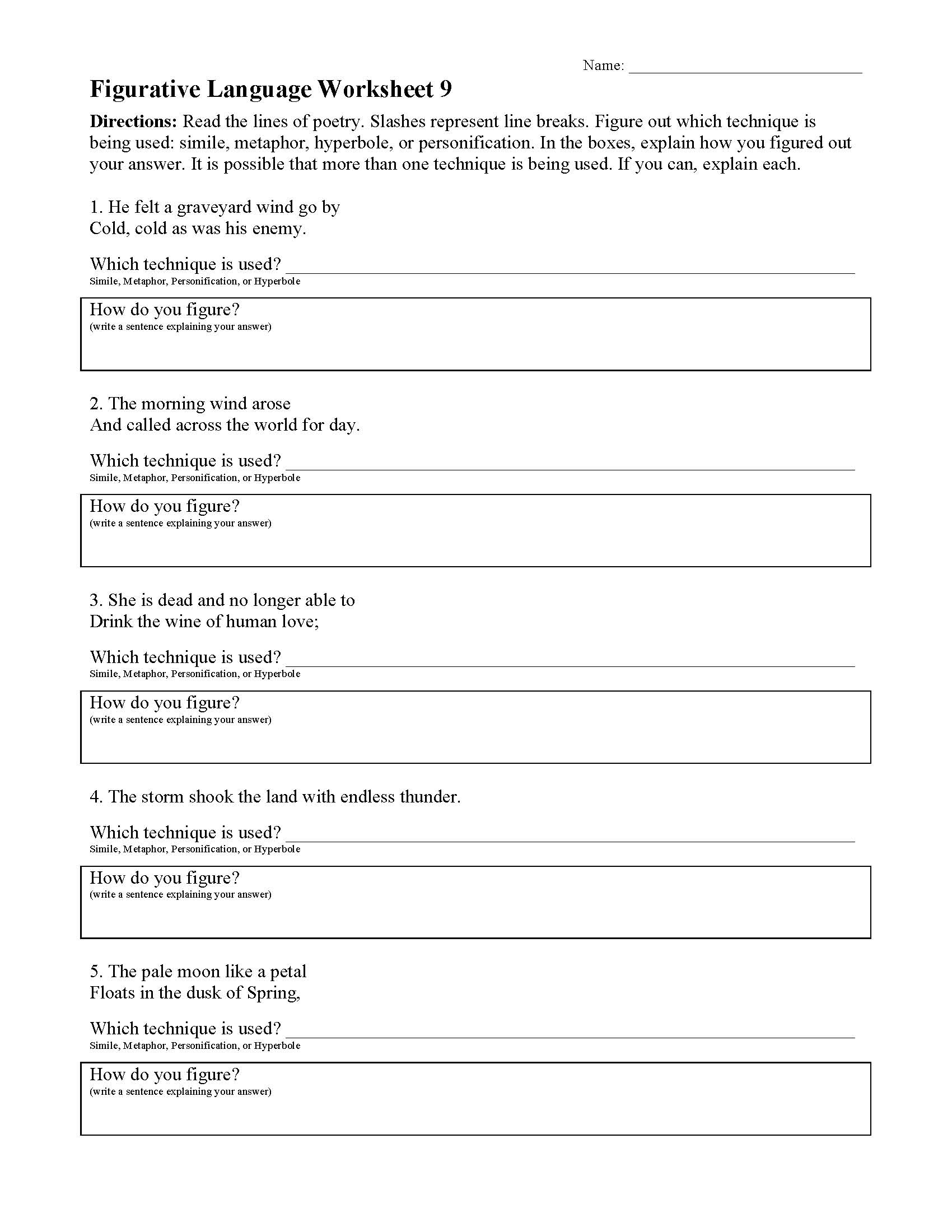
"Lord of the Flies" Figurative Language Worksheet
Here's a four page, 26 question worksheet featuring examples of figurative language taken from one of my favorite books, "Lord of the Flies." Students determine what figure of speech is used and explain their answers.
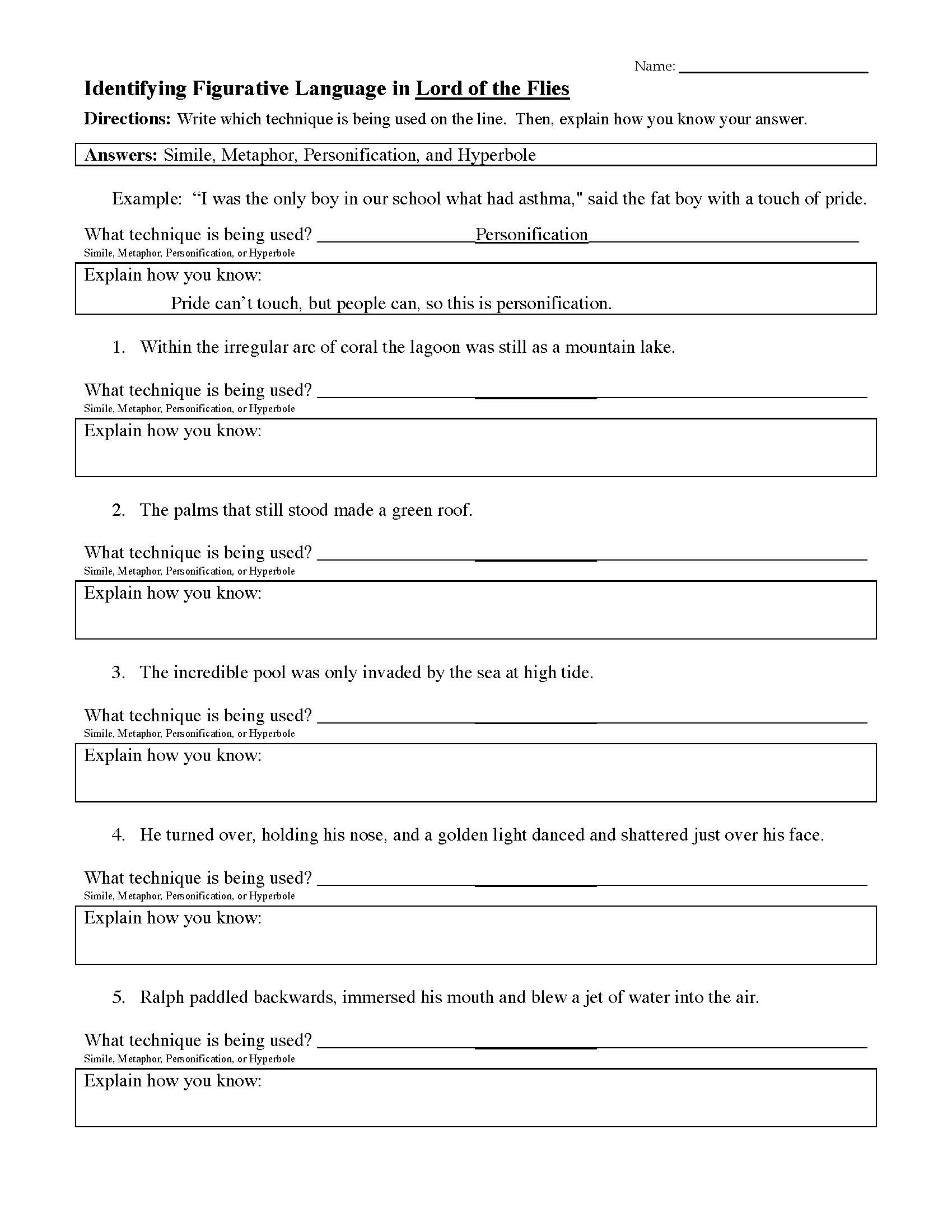
Figurative Language of Edgar Allan Poe Worksheet
Here's a figurative language worksheet featuring lines from stories and poems of Edgar Allen Poe. Students write which technique is being used on the line and then explain how they figured out the answer. This is a great activity to use alongside one of Poe's stories.
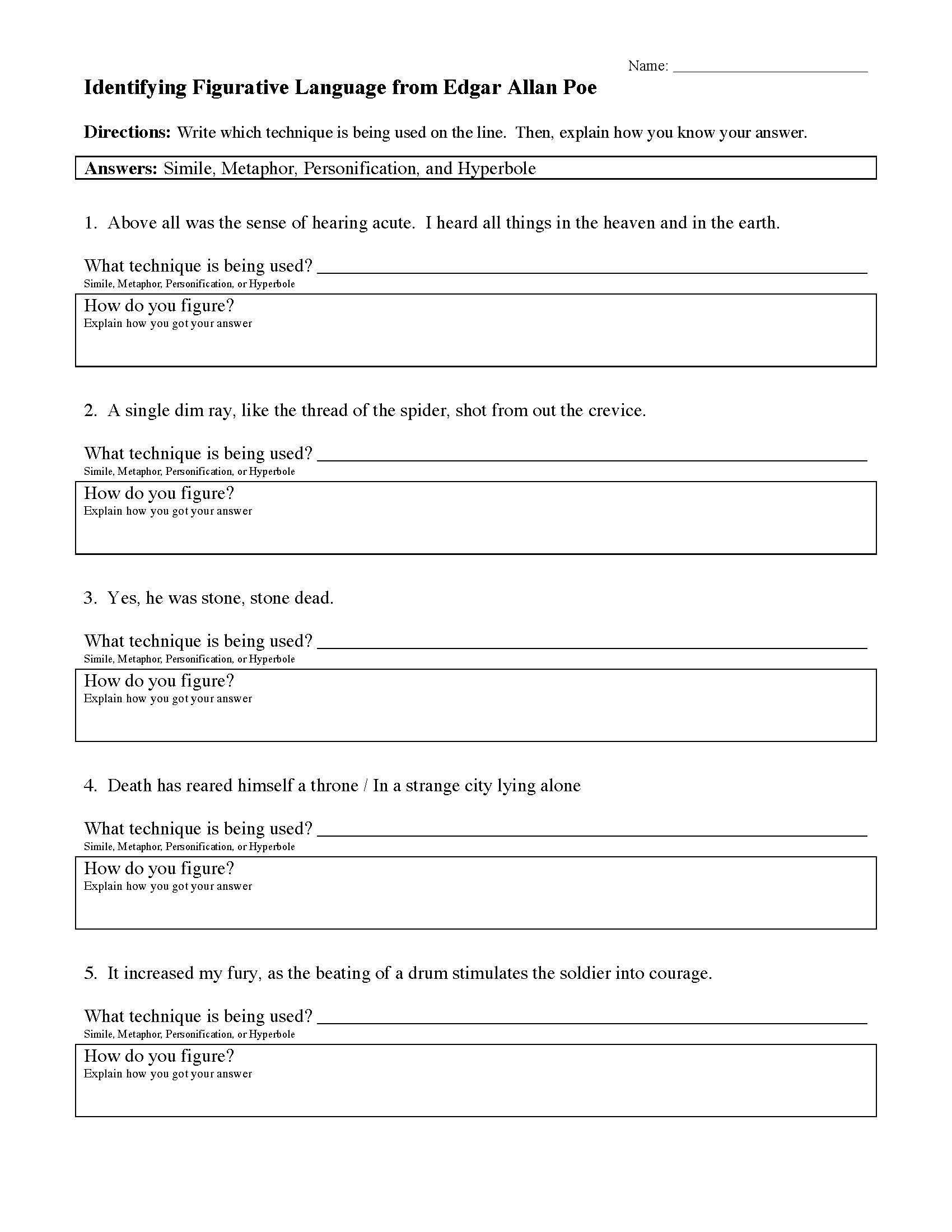
Figurative Language of O. Henry
This worksheet features twenty-three selected examples of figurative language from O. Henry, one of the master writers of the short story. This four-page worksheet will give students plenty of practice with working with figurative language and poetic devices.
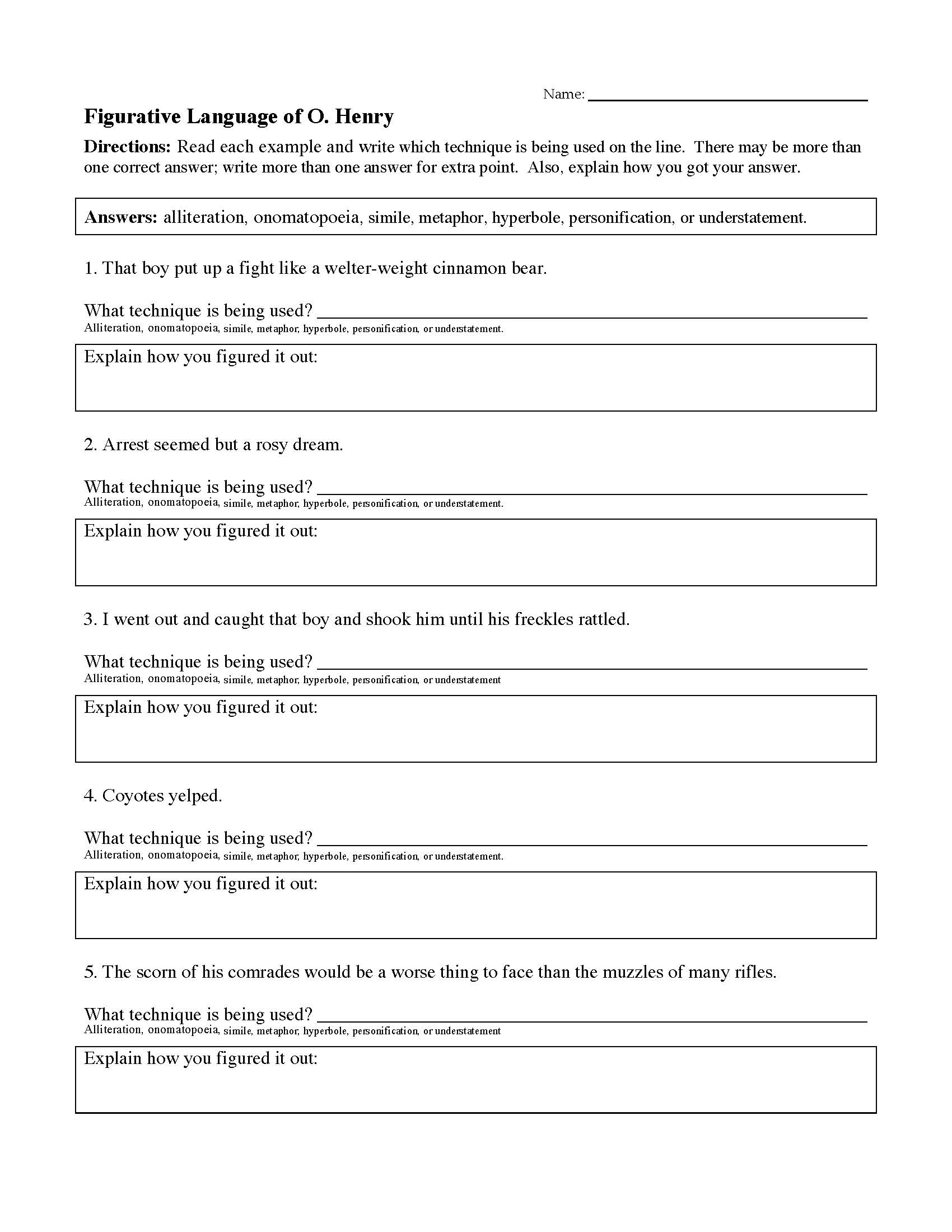
Figurative Language of Shakespeare
Shakespeare is not only a master of the theater, he is also a master of figurative language. His language is also a bit more difficult for most students to decode, so this is not a recommended activity for novices. Here are 23 figurative language examples used in Shakespeare's tragedies, comedies, history plays, and sonnets.
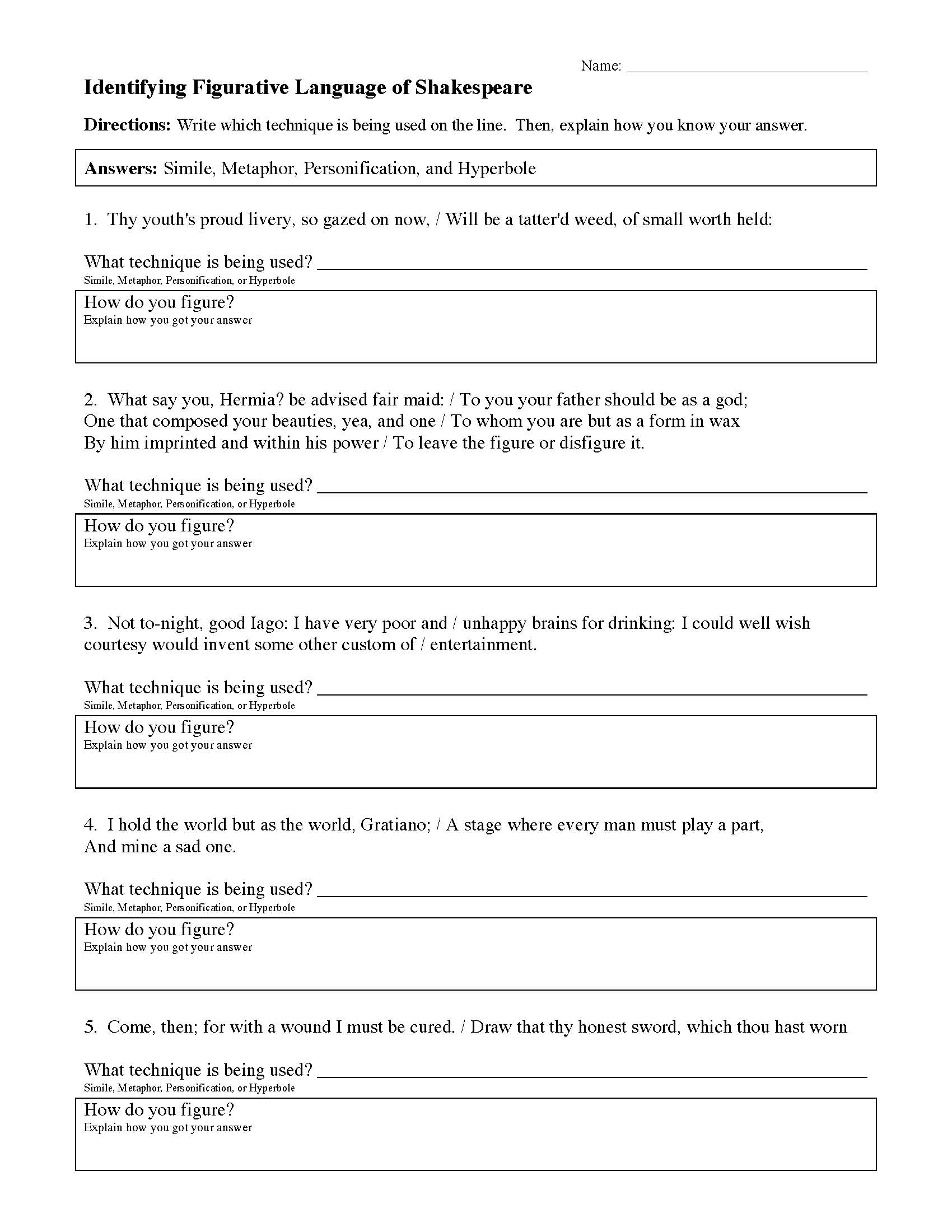
Figurative Language and Poetic Devices Review Games
Orpheus The Lyrical: Figurative Language Video Game
Here is a high-interest figurative language video game that I wrote. Students play as the mythical Orpheus in his quest to retrieve his beloved Eurydice from Hades. They will answer literally hundreds of figurative language questions along the way. This is a fun and exciting way to review figurative language techniques and students really get into it.
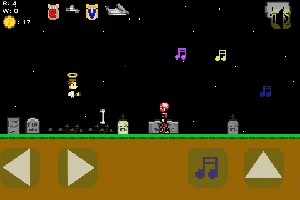
Poetry Cat: Poetic Devices Video Game
This is a fun and free browser game to help you review poetic devices. Students play as a cat and try to collect balls of yarn. When they get hit by an enemy, they have to answer a question to proceed. This game is fun, engaging, and has hundreds of questions on poetic devices. Very educational!
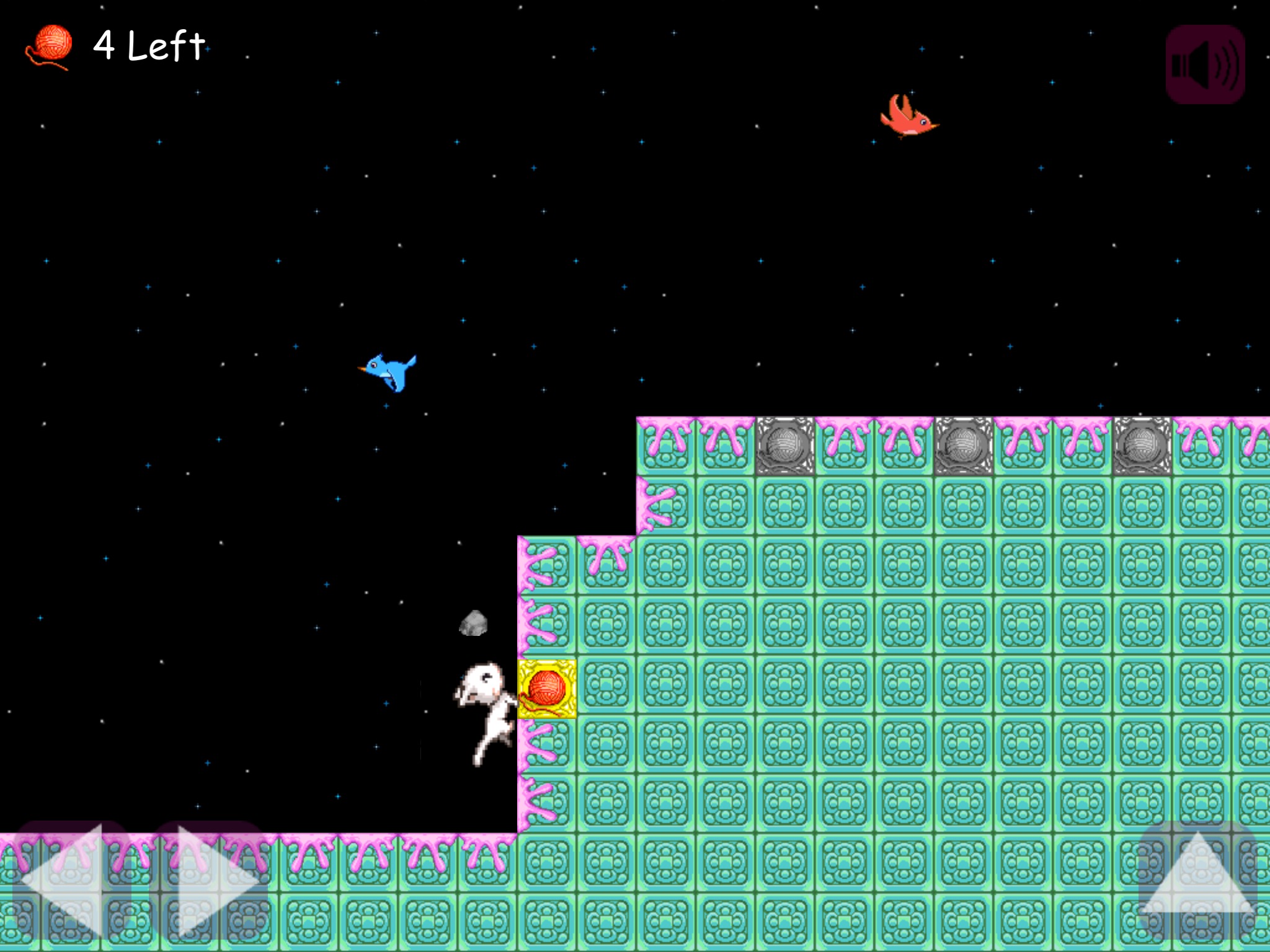

Figurative language can add magic to your writing.
Figurative Language
Common Core State Standards
Figurative Language Anchor Standards
R.4 - Interpret words and phrases as they are used in a text, including determining technical, connotative, and figurative meanings, and analyze how specific word choices shape meaning or tone.RL.2.4 - Describe how words and phrases (e.g., regular beats, alliteration, rhymes, repeated lines) supply rhythm and meaning in a story, poem, or song.
RL.3.4 - Determine the meaning of words and phrases as they are used in a text, distinguishing literal from nonliteral language.
RL.4.4 - Determine the meaning of words and phrases as they are used in a text, including those that allude to significant characters found in mythology (e.g., Herculean).
RL.5.4 - Determine the meaning of words and phrases as they are used in a text, including figurative language such as metaphors and similes.
RL.6.4 - Determine the meaning of words and phrases as they are used in a text, including figurative and connotative meanings; analyze the impact of a specific word choice on meaning and tone.
RL.7.4 - Determine the meaning of words and phrases as they are used in a text, including figurative and connotative meanings; analyze the impact of rhymes and other repetitions of sounds (e.g., alliteration) on a specific verse or stanza of a poem or section of a story or drama.
RL.8.4 - Determine the meaning of words and phrases as they are used in a text, including figurative and connotative meanings; analyze the impact of specific word choices on meaning and tone, including analogies or allusions to other texts.
RL.9-10.4 - Determine the meaning of words and phrases as they are used in the text, including figurative and connotative meanings; analyze the cumulative impact of specific word choices on meaning and tone (e.g., how the language evokes a sense of time and place; how it sets a formal or informal tone).
RL.11-12.4 - Determine the meaning of words and phrases as they are used in the text, including figurative and connotative meanings; analyze the impact of specific word choices on meaning and tone, including words with multiple meanings or language that is particularly fresh, engaging, or beautiful. (Include Shakespeare as well as other authors.)
Click to VIEW Grade Level Standards for R.4
L.5 - Demonstrate understanding of figurative language, word relationships, and nuances in word meanings.
L.3.5a - Distinguish the literal and nonliteral meanings of words and phrases in context (e.g., take steps).
L.4.5 - Demonstrate understanding of figurative language, word relationships, and nuances in word meanings.
L.4.5a - Explain the meaning of simple similes and metaphors (e.g., as pretty as a picture) in context.
L.5.5a - Interpret figurative language, including similes and metaphors, in context.
L.6.5 - Demonstrate understanding of figurative language, word relationships, and nuances in word meanings.
L.6.5a - Interpret figures of speech (e.g., personification) in context.
L.7.5 - Demonstrate understanding of figurative language, word relationships, and nuances in word meanings.
L.7.5a - Interpret figures of speech (e.g., literary, biblical, and mythological allusions) in context.
L.8.5 - Demonstrate understanding of figurative language, word relationships, and nuances in word meanings.
L.8.5a - Interpret figures of speech (e.g. verbal irony, puns) in context.
L.9-10.5 - Demonstrate understanding of figurative language, word relationships, and nuances in word meanings.
L.11-12.5 - Demonstrate understanding of figurative language, word relationships, and nuances in word meanings.
L.11-12.5a - Interpret figures of speech (e.g., hyperbole, paradox) in context and analyze their role in the text.
L.3.5a - Distinguish the literal and nonliteral meanings of words and phrases in context (e.g., take steps).
L.4.5 - Demonstrate understanding of figurative language, word relationships, and nuances in word meanings.
L.4.5a - Explain the meaning of simple similes and metaphors (e.g., as pretty as a picture) in context.
L.5.5a - Interpret figurative language, including similes and metaphors, in context.
L.6.5 - Demonstrate understanding of figurative language, word relationships, and nuances in word meanings.
L.6.5a - Interpret figures of speech (e.g., personification) in context.
L.7.5 - Demonstrate understanding of figurative language, word relationships, and nuances in word meanings.
L.7.5a - Interpret figures of speech (e.g., literary, biblical, and mythological allusions) in context.
L.8.5 - Demonstrate understanding of figurative language, word relationships, and nuances in word meanings.
L.8.5a - Interpret figures of speech (e.g. verbal irony, puns) in context.
L.9-10.5 - Demonstrate understanding of figurative language, word relationships, and nuances in word meanings.
L.11-12.5 - Demonstrate understanding of figurative language, word relationships, and nuances in word meanings.
L.11-12.5a - Interpret figures of speech (e.g., hyperbole, paradox) in context and analyze their role in the text.
Click to VIEW Grade Level Standards for L.5
Still looking for something?
Search here.
Search here.
Leave a comment
162 Comments
- How to Make Similes | Ask About Education
- How to Make a Metaphor | Examples of Metaphors
- How to Make a Metaphor
Leave a Reply
By Using This Website You Agree to the Terms of Use and are aware of our privacy policy.
Subscribe Now
Get emails about new stuff.
Don't worry. I hate spam too.
Some Other Useful Pages
- Author's Purpose Worksheets
- Characterization Worksheets
- Conflict Worksheets
- Fact and Opinion Worksheets
- Figurative Language Activities
- Figurative Language Poems with Questions
- Genre Activities
- Irony Worksheets
- Making Predictions
- Mood Worksheets
- Nonfiction Passages and Functional Texts
- Parts of Speech Worksheets
- Poetic Devices
- Point of View Worksheets
- School Project Ideas
- Setting Worksheets
- Simile and Metaphor Worksheets
- Story Structure Worksheets
- Text Structure Worksheets
- Theme Worksheets
- Tone Worksheets
- ALL PAGES AND WORKSHEETS
Search This Site




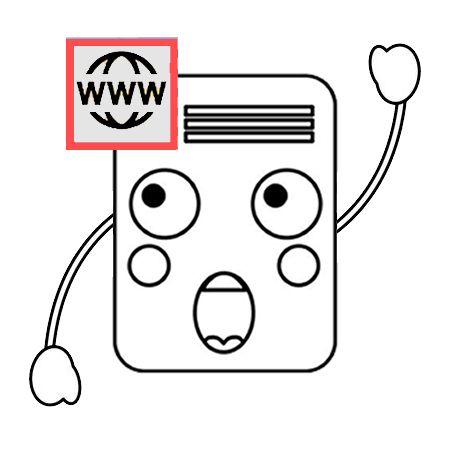

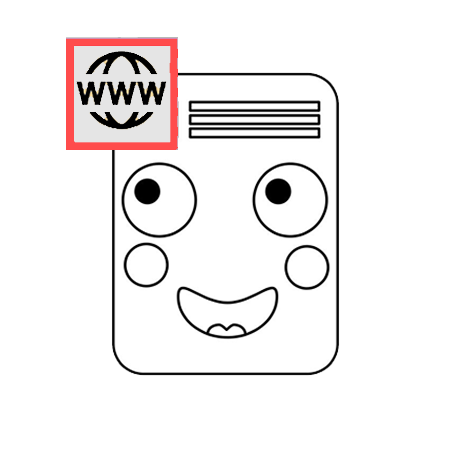
Jaclyn
/ April 20, 2012This is the most AMAZING website I have every stumbled upon in my 12 years of teaching! I can’t even begin to express how grateful I am for these resources! Outstanding work. THANK YOU!
Mr. Morton
/ May 3, 2012That’s very kind of you to say. Thanks for visiting!
Chas
/ April 16, 2012Thank you so much for this website! It’s really helped make explaining figurative language to my sixth grader easier by giving me a clearer understanding. Are the answers to the worksheet, Figurative Language of I. Henry, available to view? Thanks for you help 🙂
Diana
/ April 9, 2012I do appreciate when a fellow colleague shares such wonderful work for others to use. I am wondering where the answers to O. Henry are located. I was able to find all of the rest.
Again, thanks for the superb worksheets.
Greg
/ April 1, 2012Thanks, you saved me from so much extra work.
Sue
/ March 31, 2012Did it really have to be two male names? Yes Sam can be a girls name but I don’t want to have to explain anything in 5th grade.
Sue
/ March 31, 2012I was happy to find the great list of Idioms until I went to use them in class. One student asked me about the one that said the Sam and Paul… were going to tie the knot. A heads up would have helped.
Mr. Morton
/ March 31, 2012In my understanding, tying the knot refers to getting married. I believe that this is a completely acceptable practice and requires no “heads up” (another great idiom). Why would one need a “heads up” in regards to this completely socially acceptable practice?
Annette
/ March 26, 2012Thanks for wonderful worksheets. I don’t know where you get the time. One request is the answer key for the Lord of The Flies, figuritive language work sheet.
Mr. Morton
/ March 31, 2012It’s there. On the link that says “view answers.”
Alexis
/ March 18, 2012Wonderful content!! Thanks for making such a cool thing free. Told the whole team at school first thing Monday!
Mr. Morton
/ March 20, 2012Thanks for spreading the word.
Ms. Rowerdink
/ March 15, 2012I need an answer key
Shannon Doll
/ March 13, 2012THANK YOU!
These are fantastic!
These are exactly what I needed today!
Saudat Banke Balogun
/ March 9, 2012Thank you so much! This is really cool and I’m loving it.
Kathryn
/ March 2, 2012Wonderful. Most FL worksheets I find are overly simplistic and don’t contain the kind of figurative language that kids are ACTUALLY going to encounter in their reading/lives. These are top-notch. Thank you!
Renae
/ February 27, 2012I think it’s awesome when someone as yourself takes the time to create something so helpful and then willingly shares it with other colleges! You are exactly the type of person I would love to team with. Thank you!
Mr. Morton
/ March 3, 2012Consider us teammates, Renae. 😀
Elaine
/ February 24, 2012Thank you. This website has saved me much time and energy. I love that there is a “how do you know” box for each figurative language example. “Where is your proof?” or “What is your text evidence?” is my favorite saying.
elaine
/ February 23, 2012Amazing. Just what I need. I’ve been using the song lyrics of Bruno Mars, Pink Floyd and Katy Perry for teaching examples of figurative language but your examples are way more thought provoking and will be a great challenge. Thanks so much
Mr. Morton
/ March 3, 2012Song lyrics are a great way to review figurative language/poetic devices, and kids love them. Thanks for this clever suggestion.
Mrs. Babsellers
/ February 20, 2012My goodness Mr. Morton, your creativity and higher level-thinking skills blow me away! What a gem you are to have created and shared these worksheets and powerpoints. I often need something for my gifted learners that encourages explanation and challenges them, and thanks to you, I’ve found it! Many thanks.
Mr. Morton
/ February 23, 2012I’m so happy to hear it.
Blake
/ February 14, 2012Love the worksheets! These will be a big help in my GED Prep class!
Mr. Morton
/ February 23, 2012I’m glad to hear it. Best wishes!
molly
/ January 29, 2012These are wonderful. I cannot tell you how much I appreciate you giving these away! You’re generosity and kindness has save so many teachers hours and hours.
Cheers to you.
Many many thanks!
Richard
/ January 23, 2012Thank you so much. I am a humanities teacher who has had yr 7 English dumped on me. The worksheets are so time saving for me.
Mr. Morton
/ January 31, 2012I’m sorry to hear it… and happy to help. You’ll love English once you get in it a bit; I’m sure of it. 😀
Lisa Garcia
/ January 22, 2012Thank you for making your hard work available for the benefit of others. They have been a huge help to me. You should be very proud of your efforts.
guest
/ January 9, 2012Thanks! I always appreciate freebies.
Pam
/ December 8, 2011Thank you!! These are just what I was searching for…get so tired of making my own sometimes! Thanks for sharing.
Mr. Morton
/ December 14, 2011I know. It’s exhausting…
Mrs. Hession
/ November 29, 2011Wanted to say that these practice worksheets are excellent and I am already seeing some improvement in skills through practice with them and re-teaching with your powerpoints. Thanks for your hard work!
Mr. Morton
/ December 1, 2011Thanks for visiting!
Kate
/ November 28, 2011Thank you for sharing these! These handouts are wonderful.
Ms. Griffin
/ November 6, 2011Thank you for the engaging worksheets. I will share these with the beginning teachers at my school.
Mr. Morton
/ November 7, 2011It’s my pleasure. Thanks for visiting!
Maria
/ October 31, 2011“touch of pride” I am thinking this may not be personification (as the example states). Maybe more of an idiom- as it is meaning a little bit of pride. Perhaps if it was “touched by pride” or “a touch from pride” it would be personification. Thoughts?
Thanks for the worksheets. They are so helpful!! 🙂
Mr. Morton
/ November 21, 2011I suppose it depends on how you interpret it.
Personally, I feel that the study of figurative language is not an exact science, as understanding may vary based on interpretation. And once you get into the realm of idioms, forget about it…. Most idioms are in fact other examples of figurative language: similes, metaphors, etc. Anyway, you raise an interesting point. One with which I do not necessarily disagree. Thanks for visiting!
Patricia Taylor
/ October 19, 2011These are awesome worksheets and I love the .rtf form. It allows me to input material in that we have discussed and they are currently familiar with….
Thank you so much for all the effort you have invested in this work.
Mr. Morton
/ October 19, 2011That’s exactly what I was hoping for. Thanks for visiting and sharing your strategy.
Okechukwu
/ October 8, 2011Wow what a site, I love it, I love it, and I love it
Jay Gowen
/ October 5, 2011Wow! These are the best worksheets I’ve ever seen. (NOT hyperbole) Practice is the only way for kids to learn these concepts, which unfortunately often comes across as mindless (personification) and rote. Yet these feel so authentic. Thanks for spending the time putting together such a great resource and for sharing with all of us.
Mr. Morton
/ October 5, 2011Thank you kindly, Mr. Gowen.
I value your use of figurative language in the comment.
Alberta Ross Dunbar
/ September 20, 2011These activities are on fire. I love them. Thank you! I am beginning a unit of figurative language, and this fits everything that I will need. Once again thank you so much. Hope I will be able to share with you sometime in the furture!
Mr. Morton
/ September 20, 2011Oh dang! On fire? That’s great figurative language right there. Thanks for visiting.
kadia
/ September 7, 2011Thank you for some higher level worksheets that cover figurative language. These are very helpful.
Littweeter1
/ September 2, 2011Thanks a lot for sharing all these! I certainly hope this will help my ESL students appreciate the English Language more. 🙂
Mr. Morton
/ September 13, 2011I share your hopes.
Kristin
/ March 28, 2011I love the sources and this is exactly what my students needed. Thanks so much!
Lori
/ March 23, 2011Thank you for some higher level worksheets that cover figurative language. These are very helpful! My kids were so excited about the worksheet with some music lyrics, they actually tried to find from where the lines that they couldn’t place came!
Sharon
/ March 17, 2011Thank you I especially liked that the students have to answer-How do you figure? This helped to reinforce the meanings of the figurtive language words.
Mr. Morton
/ March 17, 2011Thanks, Sharon. And thank you for stopping by the site.
Michilene
/ March 9, 2011I used your activities to prepare for our state exam. It was wonderful and helped the student tremendously. Thank you so much.
Mr. Morton
/ March 9, 2011So pleased to hear it. Please visit again.
Lisa
/ March 7, 2011I love your activity sheets. Thanks do much for sharing.
Ronke Ogunleye
/ March 4, 2011Thanks so much!
T. Hollingsworth
/ March 4, 2011Thanks, at 8:30 a.m. finding this was exactly what I need for my 7th graders extra practice tomorrow.
Mr. Morton
/ March 5, 2011I’m pleased to hear it.
Carol Clark
/ February 28, 2011Thank for doing this worksheets. It really helps my students review before state testing. It is hard to find such great examples as these.
John
/ February 27, 2011These are perfect for my figurative language warmups. Thank you!
Mr. Morton
/ March 1, 2011My pleasure, John. Thanks for visiting.
kat julian
/ February 16, 2011I too enjoyed using these. I added a few parts but this was such a wonderful framework to begin my Fig. lang lessons! Thank you for all the work.
Mr. Morton
/ February 27, 2011I’m glad to help!
Mrs. Lienhard
/ February 15, 2011Wow! Thank you very much for all your work. These worksheet are great!
Mr. Morton
/ February 16, 2011My pleasure, Mrs. Lienhard. Thank you for visiting.
Barbie
/ February 14, 2011My goodness. Who cares about the answers? I can figure those out. These are awesome worksheets. Throwing my students for a curve!!! Thanks!
Mr. Morton
/ February 14, 2011Thanks for taking the time to comment, Barbie. I appreciate it. For those concerned about the answers, about half of them have been posted.
Connie Herrea
/ January 26, 2011Would you please email me the correct answers
Mr. Morton
/ January 26, 2011I apologize for any inconvenience.
I’ll post the answers as soon as I can.
mandy cullen
/ January 15, 2011answers?
sherrell coleman
/ January 10, 2011Where are the correct answers?
Mr. Morton
/ February 27, 2011All of the answers have been added.